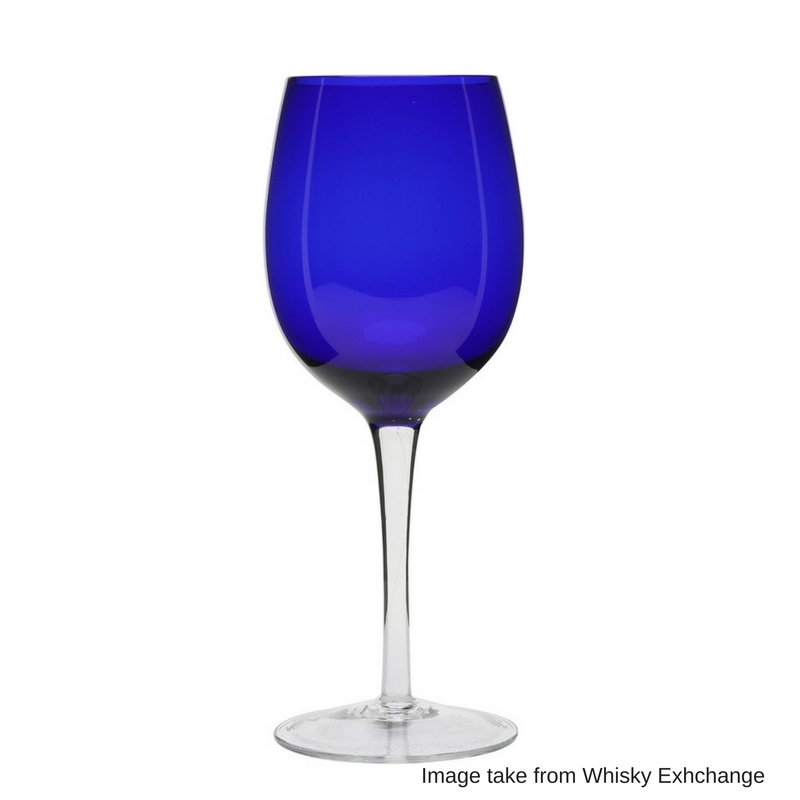Tasting Whisky Tips

In order to create this piece, I spoke to Mark Davidson, the Jolly Topper; a host of great informative Whisky tastings and a delight of a Whisky seller based in Royal Mile Whiskies.
The main thing to get from this is to do what works for you.
The traditional process is 4 steps,
1. Look at the glass to interpret the colour of Whisky, swirling the liquid to evaluate the body of the dram by how the liquid rolls down the inside of the glass.
2. Nosing the Whisky to smell the aromas
3. Tasting the Whisky, the first measured tip of the glass into your mouth which allows the spirit to roll and fold around your tongue
4. After the initial sip and swallow comes the aftertaste which should linger on your tongue and hint at new or more settled notes.
To get the most out of a Whisky and evaluate it you should adopt these steps as a foundation but here we go through some wee tips that can take your evaluating and tasting skills to the next level.
Cobalt blue for the Professional
Looking at Whisky to analyse the colour can be misleading. You could see a really dark mahogany Whisky and assume it’s been matured in a Sherry cask when actually it was matured in a Rum cask which presents a totally different landscape of flavours. Professional tasters use Cobalt blue glassware to hide this, so they can’t be influenced by a Whiskies colour.

Glassware is important
If it’s a tulip glass, an elongated tulip glass, a port glass or a Glencairn glass you would be surprized at the differences that can emerge from the same Whisky in different glasses. This is down to the size of the bowl at the bottom of the glass and how close you can get your nose to the Whisky. A smaller bowl with a larger stem seems to be very popular at the moment with good Whisky bars using these as their glassware of choice. However, another nice touch you see at tastings is to use glass lids to capture and store the aromas until the first nosing – you get much more information than you would if it were an open glass and the scents have been breathed out in ether before you have had a chance to smell.
Nosing until your heart’s content
All too often nosing is the quick foreplay before the main piece when it should be just as fundamental. If you taste a Whisky while pinching your nose you’ll see why because your tasting is limited. Spend more time doing it! You may also enjoy warming the glass slightly in your hands as a warm Whisky releases more of itself to you.
No music, no mood and a completely neutral atmosphere
This part doesn’t sound fun but creating a completely neutral atmosphere is very helpful if your tasting Whisky from a professional stand point – that’s not to say we can only drink Whisky inside laboratories but it’s good practice to be aware of the context and try to remain calm when sipping.
The Richard Paterson rule – ‘20 seconds for a 20 year old’
Right, we moved past nosing and now we’re sipping but we’re definitely not gulping. The Richard Paterson rule is as simple as it sounds, if your drinking a 20 year old Whisky hold it your mouth for 20 seconds before you swallow. Enjoy the sensation as it heats up and the revelation of the different tastes that are coming about, you will also enjoy a much better and longer aftertaste.
Add water after the initial taste.
.jpg)
It’s not sacrilege but it is stubborn. Nearly every Whisky you to taste is already watered down except it’s done in the bottling hall or the distillery for you. 46% alcohol is not a magical number that Whisky just arrives at and then is bottled, it is an orchestrated level and the Whisky has had normal water added to it to reduce it to what is arguably a more palatable level. If it requires a bit more water even if it’s a 46% then add some after your initial taste. Bottled at cask strength is different, this is where no water has been added and the cask has been bottled at its natural strength but in most instances you would be expected to add a bit of water to a cask strength Whisky – after the initial taste. Generally adding a touch of water opens up the dram and takes the heat out of the alcohol level.